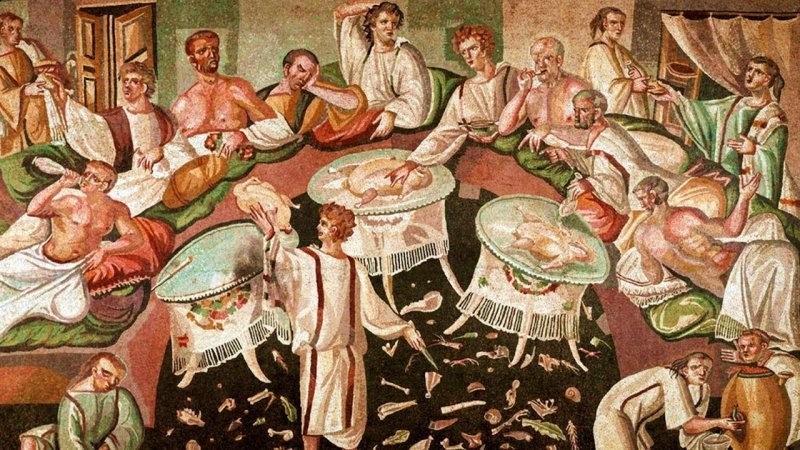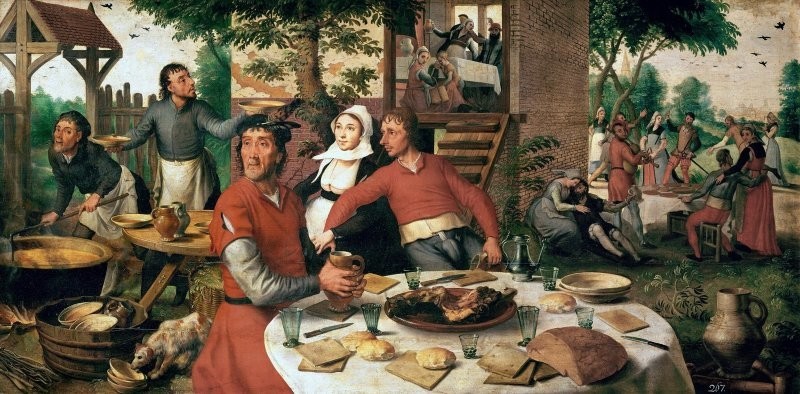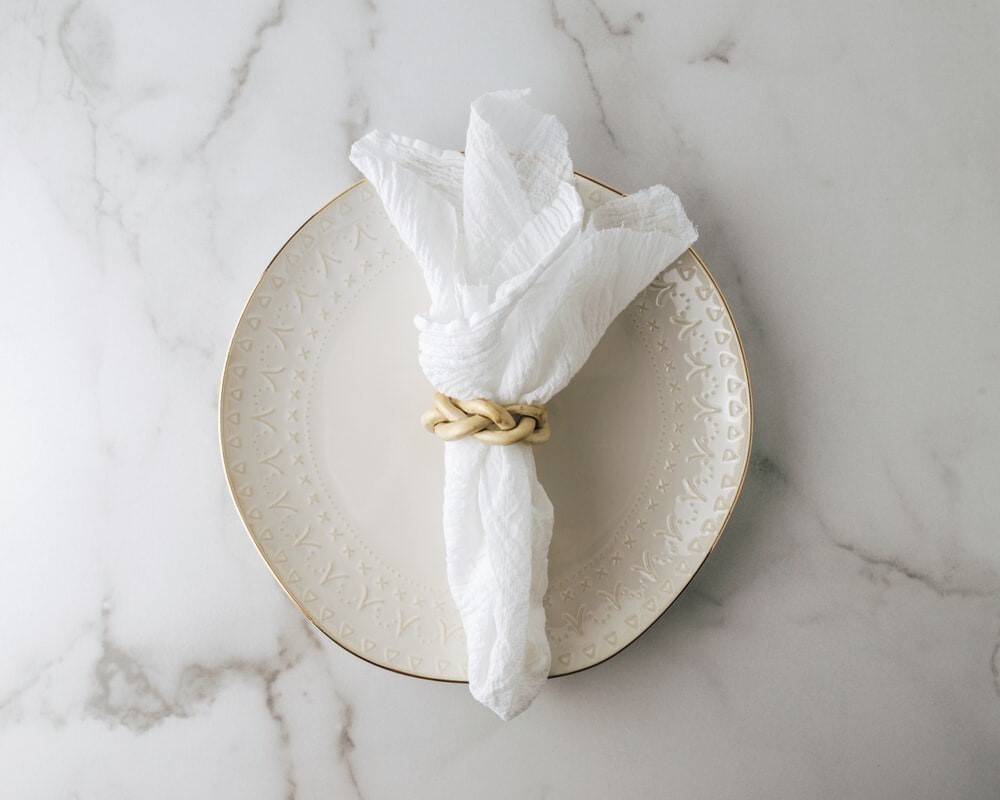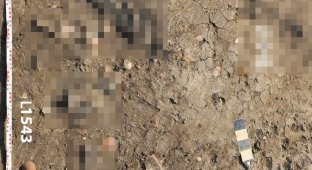Until there were cutlery, people ate with their hands. After the meal they usually wiped their fingers with sawdust or hay. The Spartans wiped their hands bread, which was then given to the dogs. 
According to scientists, analogues of napkins appeared in the Ancient Rome and Ancient Greece: slaves wiped their master's mouth with a fig leaf. Wealthy Romans to clean hands and face periodically linen was used. 
Roman feast
Napkins in ancient Rome were of two types: a small piece sudarium fabric, a la a handkerchief, which was used to blot sweaty forehead and neck and mappa - a larger piece of cloth, which was used by those who ate lying down. She saved the bed from pieces of food and wiped her hands and lips with it. And if very I wanted to take the leftovers of food with me, they could be wrapped in mappa. 
"Table" boy with a basket of fig leaves
The very first napkins were made of asbestos fibers, coarse in texture. its structure. They were expensive and available only privileged persons. They were common among the sheikhs of the Middle East. And after dinner, the napkins were calcined on the fire to clean them. Many years later, one of Catherine II's contemporaries wrote that The empress also had such a "salfecta" (or rather, it was a tablecloth). But she was more entertainment for Catherine's guests - she threw her into fireplace to show how fireproof it is. 
During the early Middle Ages, the napkin was happily forgotten. People wiped themselves with anything - hands, bread, sleeves, skirts.
There they usually wiped their fingers with dirty rags, and then they threw them on the floor. And yes, they used it again. 
In Russia, the fashion for napkins was already introduced by Peter, who during meals used a German napkin. The people gladly adopted this manner, although they have become much larger than the current ones. Women decorated their embroideries, and so skillful that they were even passed on inheritance. 
In 1867, the English industrialist John Dickinson showed public paper napkins. And not only napkins, but also an industrial machine that made it possible to produce paper from cellulose permanent basis.
Add your comment
You might be interested in:























